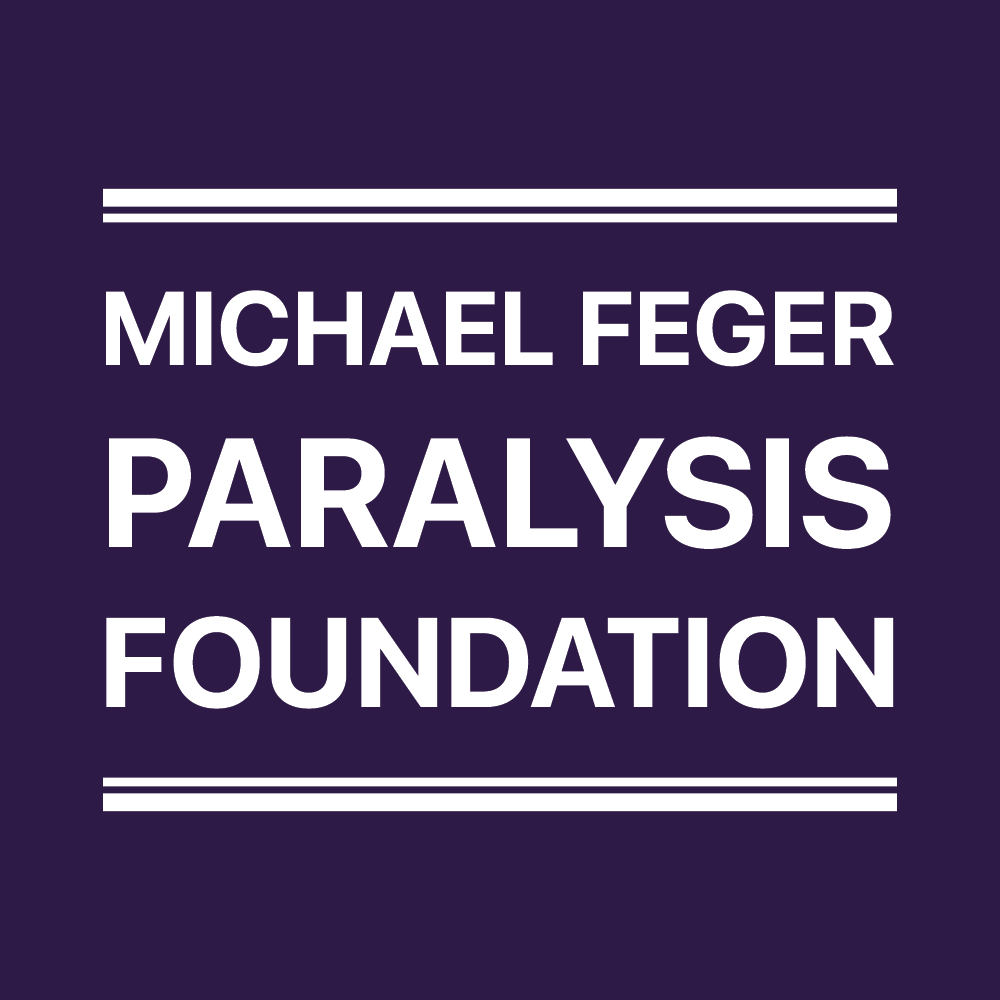Frequently Asked Questions
About the Michael Feger Paralysis Foundation
- Q: How do I apply for a grant?
- A: If you have a spinal cord injury and live in Kentucky. Please Contact Us for a Grant Application.
About Donations
- Q: Is my donation tax-deductible?
- A: Yes, donations to are tax-deductible in the USA.
- Q: Is there a minimum amount for my donation?
- A: No, you can donate as much and as often as you would like.
- Q: How much of my donation is used for the cause?
- A: We are a volunteer only organization. 100% of your donation goes to help people with paralysis.
- Q: What is my donation being used for?
- A: Your donation will be used to fund our Quality of Life Grants.
About SCI & Paralysis
- Q: What is a spinal cord injury?
- A: Spinal cord injury is the consequence of a traumatic or ischemic event, which results in damage to cells within the spinal cord or a severance of the nerve tracts that relay signals up and down the spinal cord. The most common type of SCI is caused by contusion injury (induced by bruising of the spinal cord). Other types of injuries include lacerations (severing or tearing of nerve fibres such as damage caused by a gunshot wound).
- Q: What are the consequences of a spinal cord injury?
- A: Severe SCI often causes paralysis (loss of control of movements and muscles of the body) and loss of sensation and reflex function below the point of injury, including autonomic activity and other activities such as bowel and bladder control. Other symptoms, such as pain or sensitivity to stimuli, muscle spasms and sexual dysfunction, may develop over time. SCI patients are also prone to develop medical complications such as bladder infections, lung infections and pressure sores.
- Q: What are the treatments?
- A: While recent advances in emergency care and rehabilitation allow many SCI patients to survive, interventions to reduce the extent of injury in order to restore functions have not yet reached a clinical process.To date, immediate treatment of acute SCI includes techniques to relieve cord compression, early application of high dose corticosteroids (cortisone methylprednisolone, as early as eight hours after injury, controversial efficacy) and stabilisation of the vertebral column to prevent further injury.
- Q: Is there a cure for spinal cord injury?
- A: There is no cure yet, but current research proves that spinal cord repair and regeneration is possible. More and more scientists around the world are confident that a putative cure for paralysis in humans could be as close as ten to twenty years away.
- Q: What is paralysis?
- A: Paralysis is an impairment or loss of movement and / or sensation, which is caused by impaired neuronal impulse conduction in the nervous system.
- Q: What is meant by the terms "complete" and "incomplete" injuries?
- A: Complete injuries result in a total loss of sensation and function below the injury level (classified as ASIA A), whereas incomplete injuries result in partial loss (classified as ASIA B-D).Here, functional "complete" does not necessarily mean the cord has been completely detached (which would be “complete” anatomically).
- Q: What are paraplegia and quadriplegia?
- A: Paraplegia is the loss of sensation and movement in the legs and in parts of the trunk usually resulting from an injury to the nerves below the neck. Quadriplegia (also called tetraplegia) is the paralysis of all four limbs (from the neck down) resulting from an injury to the spinal cord on the neck. The spinal cord injury also impairs bodily functions such as bladder, bowel, sexual function.
- Q: What is the spinal cord?
- A: The spinal cord enables the brain to “communicate” with the body by transmitting nerve impulses (nerve conduction). Up and down the spinal cord, every second of your life, messages are sent to keep you on the move. Following spinal cord injury, nerve conduction (“communication”) may be severed resulting in a loss of function (sensory and motor, see below).
- Q: What is the prognosis?
- A: The types of disability associated with SCI vary greatly depending on the severity of the injury, the segment of the spinal cord at which the injury occurs and which nerve fibres are damaged. Most people with SCI regain some functions between a week and six months after the injury, but the likelihood of spontaneous recovery diminishes after six months. Rehabilitation strategies can minimize long-term disability.During the first year after SCI, 15.4 % change from complete (ASIA A) to incomplete (ASIA B-E) injury. Among them are 7.6% who regain motor function (ASIA C, D) Marino et al., 1999, Arch Phys Med. Rehabil 80: 1391-6 In the following four years, from one year until five years after the injury, an additional 5.9% change from complete (ASIA A) to incomplete (ASIA B-E) injury. Among them are 2.2% who regain motor function (ASIA C, D) Kirshblum et al. 2004, Arch Phys Med. Rehabil 85: 1811-7 In total, during the first five years, 21.3% of patients change from complete (ASIA A) to incomplete (ASIA B-E) injury.


